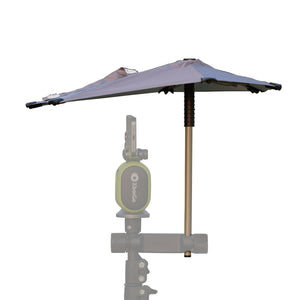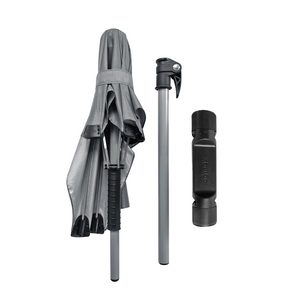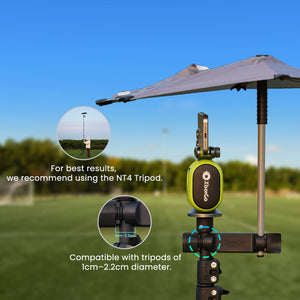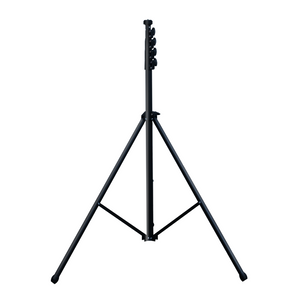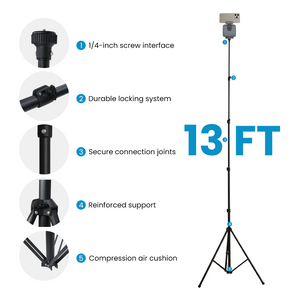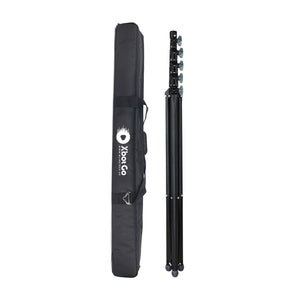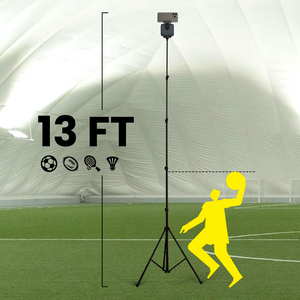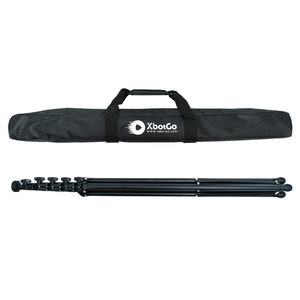XbotGo Chameleon AI Sports Camera
Soccer Formations: The Complete Guide
Soccer formations provide the tactical blueprint for how teams organize on the field. Whether you're a player developing tactical awareness, a coach designing strategies, or a parent following youth matches, understanding formations unlocks deeper appreciation of the beautiful game.
Understanding Soccer Formation Basics
Soccer formations are expressed as numbers representing players from defense to attack, excluding the goalkeeper. A 4-4-2 means four defenders, four midfielders, and two forwards. However, modern formations are dynamic systems that constantly evolve during play.
"Nobody actually uses a 'static' formation in real life," notes an experienced youth coach. "Formations change in different moments—a 4-4-2 in defense can transform into completely different setups when attacking."
This fluidity defines modern soccer. Teams flow between shapes based on possession, field position, and game situation. When attacking, fullbacks push high and midfielders surge forward. Lose the ball, and players quickly reorganize into defensive shape—all within seconds.
Professional soccer uses position numbers (1-11) that help decode tactical discussions: goalkeeper (1), defenders (2-5), midfielders (6-8), and forwards (9-11). While players now choose their jersey numbers, these positional references remain crucial for tactical understanding.
The Most Popular Soccer Formations
4-4-2 Formation: The Classic Foundation
The 4-4-2 remains soccer's most enduring formation, offering perfect balance between attack and defense. Picture two banks of four players creating defensive walls, with two strikers working in partnership up front.
Strengths:
- Defensive solidity: Two lines of four create compact defensive blocks that are difficult to break down
- Partnership up top: Two strikers can combine with one-twos, create space for each other, or split defenders with opposing runs
- Clear roles: Each position has defined responsibilities—fullbacks handle wide defense, center backs protect the middle, wingers provide width, central midfielders control tempo
- Counter-attacking excellence: Win the ball and immediately have outlets—wide to wingers or direct to the strike partnership
- Youth development: Simple enough for young players to grasp basic positional play
Weaknesses:
- Midfield battles: Against three-midfielder systems, the central duo often gets outnumbered and overrun
- Predictable patterns: Opponents can anticipate the wide play to wingers and crosses to two strikers
- Exhausting wide roles: Wingers must track back 70 yards to defend, then sprint forward to attack
- Space between lines: Smart opponents exploit the gap between defense and midfield lines
Tactical Details:The 4-4-2 typically employs one defensive midfielder who sits deeper and one box-to-box player who joins attacks. Wide midfielders tuck inside when defending to create compact shape, then spread wide in possession. The striker partnership often features one target player who holds up play and one runner who threatens space behind.
Manchester United's 1999 Champions League winning team epitomized 4-4-2 excellence. With Keane and Scholes controlling midfield, Giggs and Beckham providing width, and Cole-Yorke partnership up front, they demonstrated how simple formations executed brilliantly can conquer Europe.
4-3-3 Formation: The Modern Attacking Standard
The 4-3-3 has become synonymous with possession-based, attacking soccer. This formation creates natural triangles across the pitch, facilitating the quick-passing game that dominates modern soccer.
Strengths:
- Midfield superiority: Three central players typically outnumber opponents' two, enabling possession dominance
- High pressing: Three forwards can effectively press opponent's back four and goalkeeper
- Width and depth: Wingers stretch defenses horizontally while the striker provides vertical threat
- Tactical flexibility: Easy transformation to 4-5-1 when defending or 4-2-4 when chasing goals
- Player development: Encourages technical skills, spatial awareness, and intelligent movement
Weaknesses:
- Counter-attack vulnerability: High defensive line and advanced fullbacks leave space for quick transitions
- Physical demands: Requires exceptional fitness from all players, especially the midfield anchor
- Defensive responsibilities: Wingers must track back diligently or fullbacks become isolated
- Single pivot pressure: The defensive midfielder faces enormous tactical and physical demands
Tactical Details:Modern 4-3-3 uses various midfield configurations. The single pivot (one defensive midfielder, two advanced) provides attacking thrust. Double pivot (two defensive, one attacking) offers more security. The wingers can be traditional (staying wide) or inverted (cutting inside), depending on player characteristics and tactical approach.
Barcelona's dominance under Pep Guardiola showcased 4-3-3 perfection. With Busquets anchoring, Xavi and Iniesta controlling, and Messi-Villa-Pedro terrorizing defenses, they proved that superior positioning and movement could overcome any opponent. Their "false nine" variation, with Messi dropping deep from the striker position, revolutionized the formation.
4-2-3-1 Formation: The Balanced Solution
Currently dominating professional soccer, the 4-2-3-1 offers remarkable tactical flexibility. This formation preserves the traditional number 10 role while providing defensive stability through the double pivot.
Strengths:
- Defensive security: Two holding midfielders shield the defense and cover advancing fullbacks
- Creative freedom: The number 10 operates between lines, finding pockets to create magic
- Tactical versatility: Seamlessly shifts to 4-5-1 (defensive), 4-3-3 (attacking), or 4-4-2 (direct)
- Wide options: Wide attacking midfielders can play as traditional wingers or inside forwards
- Set-piece strength: Multiple players comfortable in various attacking positions
Weaknesses:
- Striker isolation: The lone forward can struggle against packed defenses without support
- Wide player demands: Must provide width, cut inside to shoot, and track back defensively
- Double pivot understanding: Poor communication between defensive midfielders creates dangerous gaps
- Number 10 dependency: System suffers without a quality playmaker to link play
Tactical Details:The double pivot typically features one destroyer (breaking up play) and one distributor (starting attacks). Wide attacking midfielders must be versatile—comfortable hugging touchlines or drifting inside. The number 10 requires exceptional technical ability, vision, and tactical intelligence to find space between opponent's lines.
Germany's 2014 World Cup triumph demonstrated 4-2-3-1 mastery. With Schweinsteiger-Khedira providing steel, Özil creating, and Müller's intelligent movement, they showed how balance breeds success. The formation suited their methodical style while providing defensive insurance against counter-attacks.
3-5-2 Formation: Midfield Domination
Modern 3-5-2 creates numerical superiority in midfield while maintaining width through wing-backs. This sophisticated system demands tactical intelligence and exceptional fitness from specific positions.
Strengths:
- Central overload: Five midfielders dominate the middle, controlling possession and tempo
- Wing-back width: Provides attacking width without sacrificing central numbers
- Defensive flexibility: Easily becomes 5-3-2 when wing-backs drop to defend
- Strike partnership: Two forwards prevent isolation, combining effectively
- Ball-playing defenders: Three center backs allow one to step into midfield with possession
Weaknesses:
- Wing-back demands: Require sprint speed, crossing ability, and defensive awareness—rare combination
- Wide vulnerability: Quick wingers can exploit space behind advanced wing-backs
- Communication crucial: Three center backs must constantly talk and adjust positions
- Tactical complexity: Requires mature understanding of when to attack and when to hold
Tactical Details:The three center backs typically include one sweeper/libero who can carry the ball forward. Central midfield often features one holder and two box-to-box players. Wing-backs must judge when to overlap (creating 3-2-5 in attack) versus when to stay deep (maintaining 5-3-2 shape).
Antonio Conte's Inter Milan demonstrated 3-5-2 excellence in their 2021 Serie A triumph. With Brozović orchestrating from deep, Barella and Vidal providing energy, and Hakimi-Perišić offering width, they overwhelmed opponents through midfield superiority while maintaining defensive security.
4-5-1 Formation: Defensive Solidity
The 4-5-1 prioritizes defensive organization while maintaining counter-attacking potential. Often misunderstood as negative, it's actually a sophisticated system requiring discipline and intelligence.
Strengths:
- Defensive compactness: Five midfielders create multiple defensive lines, frustrating opponents
- Counter-attack setup: Clear structure for quick transitions when winning possession
- Flexibility: Wide midfielders can be wingers (4-3-3) or defensive players (6-3-1)
- Energy conservation: Allows teams to defend deep and preserve energy for key moments
- Psychological warfare: Frustrates opponents who dominate possession without creating chances
Weaknesses:
- Lone striker isolation: Forward must possess exceptional hold-up play and movement
- Creative limitations: Generating chances requires perfect execution on transitions
- Mental demands: Players must maintain concentration despite long defensive periods
- Negative perception: Can invite pressure if team drops too deep
Tactical Details:Successful 4-5-1 requires specific player profiles. The striker needs strength to hold off defenders, pace to threaten on counters, and intelligence to find space. Central midfielders must break forward quickly in transition. Wide players balance defensive duties with providing outlets.
José Mourinho's 2010 Inter Milan showcased 4-5-1 mastery in their Champions League triumph. Against Barcelona's possession dominance, they absorbed pressure patiently before striking lethally on counters through Milito and Eto'o.
Technology and Formation Analysis
Modern technology revolutionizes tactical understanding. AI-powered systems like the XbotGo Chameleon automatically track player movements, revealing formation changes and tactical patterns throughout matches. This analysis helps coaches identify positional discipline, formation breakdowns, and tactical execution quality—insights previously exclusive to professional teams now benefit youth development.
Conclusion
Soccer formations provide essential structure, but they're frameworks, not rigid rules. From 4-4-2's simplicity to 3-5-2's sophistication, each formation offers unique possibilities when matched to player abilities and tactical philosophy.
Success comes from understanding formations deeply, then adapting them intelligently during matches. Master the principles, but remember—the best formation poorly executed loses to average formations performed brilliantly. Whether coaching youth players or analyzing professional matches, formations create the tactical foundation for soccer's endless strategic possibilities.
XbotGo Chameleon AI Sports Camera
Capture every moment with AI-powered tracking. Perfect for coaches, parents, and athletes who want seamless footage without manual filming.







 Soccer
Soccer Basketball
Basketball Ice Hockey
Ice Hockey Rugby
Rugby










